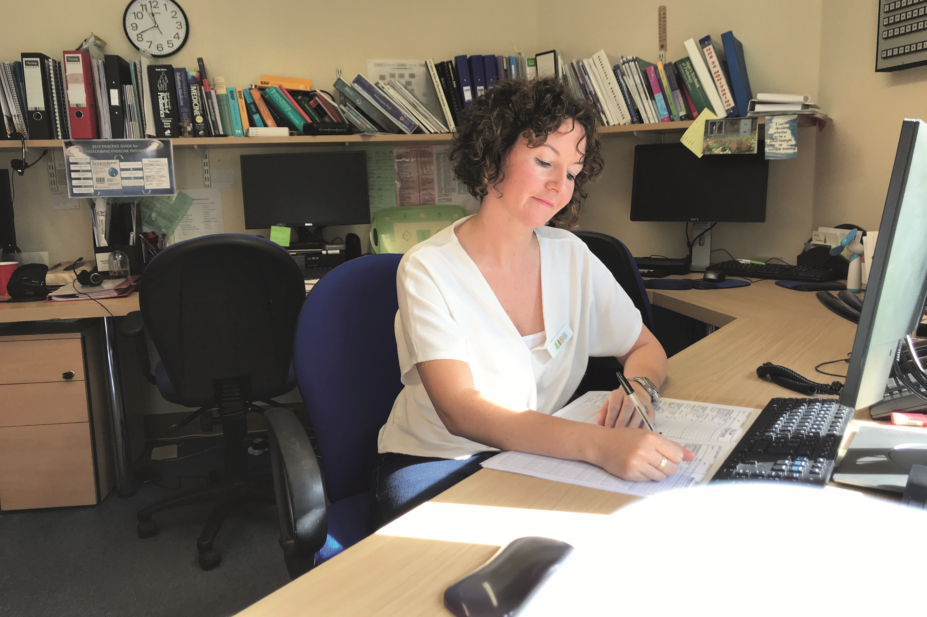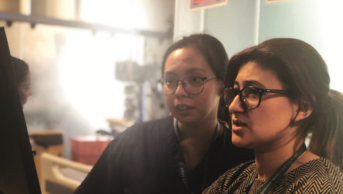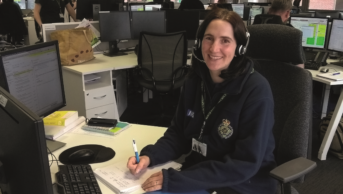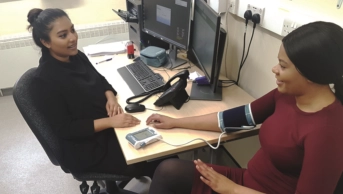
Lisa Smith
I work as part of the medical team within Children’s Hospices Across Scotland (CHAS), based between Robin House in Balloch and Rachel House in Kinross. CHAS provides care for babies, children and young people with life-shortening conditions and their families. This includes palliative and supportive care, end-of-life care, step down care, short planned breaks, family support, spiritual care and bereavement care. CHAS also operates a ‘Hospice at Home’ service across Scotland and have a dedicated nursing and medical team providing paediatric palliative care within hospitals.
I began my role as a paediatric palliative care pharmacy technician with CHAS in December 2017, after having spent ten years working as a pharmacy technician in the acute care sector and primary care. This is a new role for CHAS and the first role of its kind in the UK. Developing the role has been very rewarding and an ideal opportunity to channel the skills of a pharmacy technician to have maximum impact on medicines management processes, thereby ensuring safe and robust prescribing and medicine administration for the benefit of babies, children and young people within CHAS.
I support the pharmacist to review all children’s medicines at admission, highlight any discrepancies as well as reconcile medicines at discharge
My role is very varied. I lead on all operational and technical aspects of medicines procurement, stock management, medicines administration and medicines destruction. I have a clinical role and support the pharmacist — of which there is only one — to review all children’s medicines at admission, highlight any medication discrepancies to medical staff as well as reconcile medicines at discharge, all of which contributes to the safer use of medicines within CHAS. In addition, I have a quality improvement role and regularly conduct medicines audits with the aim of improving medicine safety. I also design and implement medicines management education and training for nursing staff with the aim of embedding safe process into routine practice.
Induction and training
On joining CHAS, a full induction programme was provided, which introduced me to the organisation and the services CHAS provide. To maintain my competencies within this specialist area of children’s palliative care, I attend in-house training days as well as external palliative care and quality improvement training days. CHAS encouraged me to attend the Association of Pharmacy Technicians UK Annual Conference in July 2018, which was an ideal opportunity to network with my peers and share practice and future aspirations for the profession.
8:30 start
I usually work three long days and one short day a week — today I am working an extended shift. I am responsible for the prioritisation and organisation of my own workload, so I begin my morning by planning for the day.
I attend the daily ‘huddle’ which is a multi-disciplinary team meeting to discuss the children using the hospice service. This is an ideal platform to communicate, identify, and resolve any pharmacy-related issues (e.g. if there are medicines supply problems that need follow up or if medicines have expired or have been stored inappropriately).
After the huddle, I technically screen the medicine charts. In paediatrics, the dose for every child is different depending on weight and/or age, therefore I check the children’s notes and screen the charts to ensure doses are appropriate for weight, the medicines are prescribed via the correct route, and all boxes on the charts have been completed appropriately. I highlight any discrepancies or omissions to medical and nursing staff for resolution. I also follow up any pharmacy-related issues highlighted during the huddle.
13:00
In the afternoon, I check the medicine charts of all children who are due to be discharged and upload any changes or additions to our electronic medical records for subsequent checking by medical staff to facilitate accurate medicines reconciliation at discharge. If needed, I contact local community pharmacies and provide manufacturer details and turn-around times of unlicensed medicines for continuity of care back in the community.
Learning from excellence is also a key component of my quality improvement work and I take care to highlight and share all the good practice that I identify
I also data-collect for a medicines omission audit that I helped to design and implement with the CHAS lead pharmacist. It is a rolling snapshot audit that details any omitted or delayed doses. I collate the omission data and prepare a results summary detailing learning points as well as highlighting good practice, which I then share with all nurses.
15:00
I regularly attend nurse team meetings to feedback on results and learning from medicines audits. Learning from excellence is also a key component of my quality improvement work and I take care to highlight and share all the good practice that I identify with the aim of providing a positive culture for improvement. Attending the nurse team meetings also gives nurses the opportunity to ask any questions or discuss issues relating to medicines management processes.
16:00
In the latter part of the afternoon, I carry out education and training sessions with the nurses. For example, I conduct one-to-one or group medicines management induction sessions. In these sessions I signpost to where resources and standard operating procedures can be found and highlight top level procedures and process that the nurses must be aware of to ensure safe medicines administration. I also conduct one-to-one medicines reconciliation training for nurses, which I designed, to ensure nurses have the skills to assess whether the patients’ own medicines are suitable for use in the hospice and identify potential discrepancies and omissions between what is prescribed and what babies, children and young people medicines labels state. This medicines reconciliation training has been well received by staff and is recognised as a good learning tool.
18:00
I spend the last part of the day focusing on service development and improving practice. For example, analysing medication incidents and designing new improvement initiatives or medication audits in consultation with the CHAS lead pharmacist. This is also the time where I update or design new standing operating procedures to support safe medicines management practice.
20:00 — time to go home
Box: How to get a job as a paediatric palliative care pharmacy technician
- Most jobs in Scotland will be advertised on the Children’s Hospices Across Scotland website and on NHS sites;
- Paediatric palliative care is a specialised area and it is unlikely that a candidate would have any direct experience; having an interest or experience in either palliative care or paediatrics would be an advantage;
- Be able to give examples of improvement work that you have been involved in, such as service development, audits or writing standing operating procedures.


